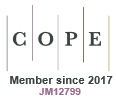A wholistic approach to patient-empowered care: a quality improvement report
Andrew Corin 1 *
1 *
1
Abstract
An updated medical model for wholistic and patient-centred care that adds elements of prevention and management of long-term medical conditions to the old biomedical model is a necessary response to current understanding of health and wellbeing. The capacity to adapt and self-manage is central to health, and important domains or pillars to consider are physical, psychological, social/emotional, and spiritual. The challenge for this model is applying it in a resource-constrained primary care environment.
The value of an enhanced model of care in a general practice setting was tested. Elements of the model were relevance and applicability to New Zealand general practice, equity considerations, and validated tools for delivering messages and measuring outcomes. Components were facilitated group video modules to educate and support participants in self-efficacy within domains of physical, psychological, emotional, and spiritual wellbeing, followed by extended one-on-one consultations between participants and their GP at 6-monthly intervals for 1 year.
Self-Efficacy and Patient Activation Measure scores increased throughout the study. Quality of Life scores and consideration of the four domains of wellbeing indicate patient ability for self-management and adaptability in the face of changing medical conditions, without decline in wellbeing.
A shift in locus of control favouring the patient, with use of validated tools to enhance a wholistic approach in patient–clinician interactions, results in meaningful health improvements. Such tools and education resources are accessible and can be incorporated into existing systems of care without substantial disruption and offers a realistic opportunity for positive change.
Keywords: empathic connection, equity, four pillars, medical model, partnership, patient-centred, patient-empowered, positive medicine, self-efficacy, wholistic care.
References
3 Fuller J. The new medical model: a renewed challenge for biomedicine. CMAJ 2017; 189(17): E640-1.
| Crossref | Google Scholar | PubMed |
4 Huber M, Knottnerus JA, Green L, et al. How should we define health? BMJ 2011; 343: d4163.
| Crossref | Google Scholar | PubMed |
5 Dhar N, Chaturvedi SK, Nandan D. Spiritual health, the fourth dimension: a public health perspective. WHO South East Asia J Public Health 2013; 2(1): 3-5.
| Crossref | Google Scholar | PubMed |
6 www.rnzcgp.org.nz. Framework benefits; 2021. Available at https://www.rnzcgp.org.nz/Quality/Quality_Framework/Qualiy_framework_benefits_/Quality/Info/Framework_benefits.aspx?hkey=a294eac5-d245-45d9-8a3c-c95d7760f370
7 Beaumont D. PositiveMedicineTM | Health Wellness Doctor NZ | Dr David Beaumont; 2021. Available at https://drdavidbeaumont.com/positivemedicine/ [cited 27 February 2025].
8 Ministry of Health. Te Whare Tapa Whā model of Māori health. Ministry of Health NZ; 2023. Available at https://www.health.govt.nz/maori-health/maori-health-models/te-whare-tapa-wha
9 PositiveMedicine. Positive Medicine | Evolving Healthcare | Healthcare Paradigm Shift; 2024. Available at https://positivemedicine.com/# [cited 27 February 2025].
10 Maren. Five Pillars of Positive Psychology | Healthy Lifestyle. Available at https://marensymonds.com/psychology/five-pillars-of-positive-psychology/
11 Institute for Healthcare Improvement. Plan-Do-Study-Act (PDSA) Worksheet | Institute for Healthcare Improvement; 2024. Available at https://www.ihi.org/resources/tools/plan-do-study-act-pdsa-worksheet
12 WHO. WHOQOL-BREF| The World Health Organization; 2024. Available at https://www.who.int/tools/whoqol/whoqol-bref
13 McCleary E. The Meihana Model. The Royal New Zealand College of General Practitioners; 2021. Available at https://www.rnzcgp.org.nz/news/equity/the-meihana-model/
14 Corin A. Being well and wellbeing: better understanding of patient priorities in primary care. J Prim Health Care 2019; 11(2): 89-95.
| Crossref | Google Scholar | PubMed |
15 Corin A. Mind over matter—implications for general practice. J Prim Health Care 2009; 1(1): 77-9.
| Google Scholar | PubMed |


